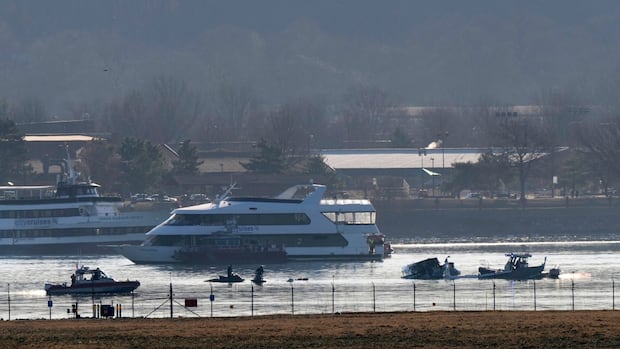Physical Address
304 North Cardinal St.
Dorchester Center, MA 02124
Physical Address
304 North Cardinal St.
Dorchester Center, MA 02124

When the investigation of a plane crash from a light plane between an American passenger plane on American aircraft and Black Hawk helicopter in the US military, questions started, questions were raised about the role played by the traffic alert system and a collision avoidance system (TCAS).
The collision, which occurred as the plane approached Ronald Reagan Washington, near Washington, DC, sent both planes to the Botomac River. Each of both planes, which included 60 passengers, four crew on board, and three soldiers on the helicopter.
However, TCAS technology is supposed to be an effective tool in helping to prevent such accidents. Here is what we know about the system and what it can do in this situation.
The problems related to the long air collisions decades ago to the American Federal Aviation Association (FAA) led to TCAD again in 1981. TCAS was assigned all over the world on all large aircraft and many smaller trips.
Footage of the CCTV camera caught the moment the effect as a passenger plane and the US Army helicopter collided. Meanwhile, the sound of air traffic control takes some direct effects of the collision.
It is an air -mobile electronic system that works independently of the ATC control system (ATC), and provides protection to avoid cute collision with wide types of aircraft, according to the FAA guide.
It is already considered the last resort, but it is integrated with other navigational offers on the plane and uses radio signals to wipe nearby aircraft. Then, the beam screens and sound warnings will be released that another plane may be seriously close.
“He only shows that traffic is on our site, and there is a potential risk.”
In certain situations, it will provide pilot guidance on how to avoid collision.
For example, if TCAS believes that the pilot needs to pay attention to the other air movement in the region, it may say “traffic”.
But it can also give a “decision advisory”, which can include “climbing” instructions, “removing the descent”, or increasing or reducing vertical speed, explained by Malmquist.
“It will actually tell you what you should do,” he said. He added that the current technology only provides vertical pathways, which means that it will not direct a plane to divert it.
MalmQuist said that while TCAS will display warnings, sound orders are automatically discouraged than a certain height.
He said that many warnings on aircraft are installed during certain stages of the flight to prevent worse problems.
Like a fire warning, for example, during the initial takeoff, it will be installed, “So the pilot does not try to do something when it is safer to carry an atmosphere.”
The same applies with the main maneuver when you are low, near the ground.
“First of all, you cannot go down anyway because the Earth exists, and you cannot quickly pull because there is the potential of the plane that does not have the ability to maneuver to do so.”
Malmkoyst said that due to the low height of both planes when you collide, TCAS is likely that a sound warning at that point is not likely.
Likewise, the pilot may not have been looking at warnings at that point. Instead, their focus was looking for the window and focused on the runway.
“Unlike someone suddenly reacts, dive into the plane on the ground, or pulling the plane up … and losing control of the plane. You have no maneuver margin at that stage,” he said.
“I don’t know that TCAS will not be useful at all, but it prevents warning and warning, specifically because the risk of other problems is higher than the risk of collision.”